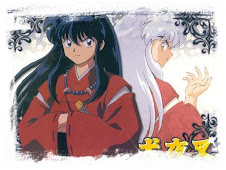- The naginata was used in fedual japan
- Had a curved blade 2 feet long mounted on a oak shaft 5-9 feet long
- Repelled cavalry(could slash horses legs and the falling horse would kill it's rider
- Used in close up fighting
- Used by women warriors
- Could keep attacker at safe distance
From USA.Dojo.com- About naginata do
- Samurai women used it as self-defense and for self-development
- helps to build physical and mental disclipline, grace and awareness of self and others
- Japanese martial art of both power and grace
- Sweeping movements are used
- can be used in competitive fighting or practiced movements of kata
- live blade (steel naginata)rarely used today
- solid wooden naginata is used for kata and the bamboo and wood naginata in competitive naginata
From http://en.wikipedia.org/wiki/Naginata
- A wood shaft with a curved blade on the end with finger guard (tsuba) in-between the shaft and shord
- Nagitsu is studied more often by women then men
- A symbol of social status of daughter's of samurai
- The naginata can batter,stab, or hook an opponent and is often spun
- The wielder could keep out of reach of attacker
From www.calpoison.org/public/spiders.html
- All spiders have some venom that varies in toxicty
- A spiders fangs are hollow and are used to inject poison into the venom
- Venom paralyzes the victim and helps digest stuff
- Spiders bite people out of fear and to protect itself
- Patient often doesn't remeber beinng bitten
- Bites are small pucture wounds, have reddness, itching, and sweating lasting for a few days
- The Hobo spider causes a open, slow healing wound that should be kept clean
- Wolf spiders are aggressive and come after their prey and are swift runners.They are also large.
- The largeness of the jaws causes tearing of skin and the bite area can turn black
- Jumping spider has a bite with symptoms of pain, redness,itching, headaches,fevers,chills,nausea and throwing up.
- Bites of these spiders have pain or burning(chronic archidism)pain
- In chronic archidism there is necrosis or tissue death when the wound is infected









No comments:
Post a Comment